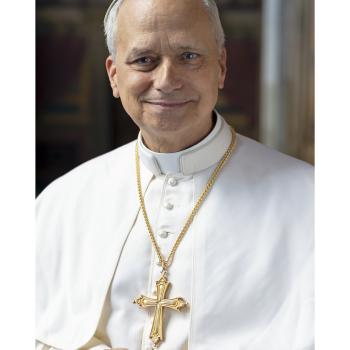There's an old Zen story about two monks who ran into each other outside their temple. One of them was sweeping the temple steps. Seeing him, the second monk admonished him: "Too busy!" What he meant was that his brother monk should have been doing something more contemplative, something like, say, meditating. The sweeping monk answered, "You should know that there is one who is not busy!"
The sweeping monk was a master of karma yoga. Even in the midst of activity, he had learned how to remain poised in stillness. Having found his own center, he could act in time and space from the state of stillness and timelessness.
Real karma yoga shifts your relationship to time. You might have actually experienced such a moment, when time seemed to cease to exist. Maybe you were truly engrossed in a task. Maybe it happened on a walk, or on your mountain bike, or even when your car skidded on the ice and swerved off the road. One minute, you're in "normal" clock time, maybe feeling normal time pressure, or wishing the clock would move faster. The next, time slows, and you're in the gap between Now and Then, between Past and Future. In that gap, the Timeless Eternal Present moment arises. There is no time pressure, because there is no time. When you can enter that zone, you have all the time you need to complete whatever task is necessary.
Years ago, when I first started to give public talks, I found myself running late to a program. The program had started, and I knew it would take me at least 10 minutes to get there. I began to rush. I could feel anxiety coursing through every cell of my body. Suddenly, from some grace-filled inner realm, the thought arose: "What do you think you're doing?" I tried to push it down and keep running, but it came up again.
What did I think I was doing? I stopped still for a moment, and practiced Stress Management 101, taking slow, deep breaths. One deep breath after another, until I felt some of the anxiety starting to drain out of my shoulders and neck.
When I went on, I noticed I was feeling different. Whether it was the breathing or the intention to stop rushing, something had moved me out of the zone of busyness, and into an internal quiet. Still focusing on the breath, I arrived at the program site five minutes late, but so present that I was able to flow right into it, with no bumps, no nervousness. That moment, simple as it was, was a kind of turning point for me. For a friend whose work demanded that he spend hours every day in punishing traffic, the turning point was a decision to keep his attention in the heart while he was driving. For each of us, the shift came with a decision to focus inward at a moment of stress, and to allow the Gap, the place of stillness where time slows down, to show its face.
The One Who Is Not Busy lives in the space between every breath. She (I'll call her she, though of course she's beyond gender) is in the breath inside the breath, and the space in between each thought. In the space between the end of one action and the beginning of the next, between one breath and another, we can merge into the source of all action, "the still point between the turning worlds." Known in Sanskrit as the Madhya, the Center point, or the Gap, this doorway into spaciousness arises in every moment. We just don't normally notice it, as we don't normally notice the pavement we're walking over.
Meditation is the way we train ourselves to notice. (It's not an accident that when Krishna began teaching his disciple Arjuna the actual methodology of the yoga of action, he started him off with meditation.) When we meditate, we practice finding and lingering in the still point. Once we've learned to inhabit it with our eyes closed, we can begin to recognize the Gap when it shows up in the midst of activity.
That kind of meditation—meditation on the fly, as it were—is often said to be more valuable than sitting meditation. But we can't really meditate on the fly until we've had some practice in sitting meditation. A regular sitting meditation practice trains you to identify the felt sense of quiet mind, and then you have a better chance of finding the quiet in the midst of focus. After years of tuning into The One Who Is Not Busy, I've learned to step into those still moments rather than overriding them. When I stop to savor that stillness, my subsequent actions flow from that quiet place, and have a power that my ordinary mind can't come near.
Practice Break: Find the Still Point in the Midst of Action
Right now, in your seat, begin to sway slowly from side to side, inhaling to one side, exhaling to the other. At the end of each phase of the movement, notice the pause. Tune into the pause that shows up on the right side, then on the left. Focus on the pause for a few seconds, then let the movement flow from that.
Do this for two minutes. Notice the effect. See if you can hold that space of quiet when you move onto your next activity.
If you can move from that place of quiet, even for a few minutes at a time, you might find that even in your busyness, you can find the timeless.





